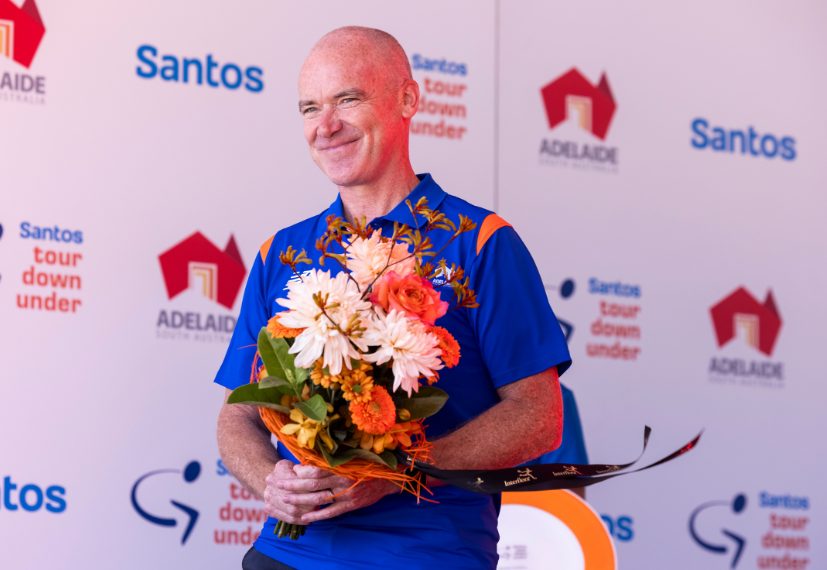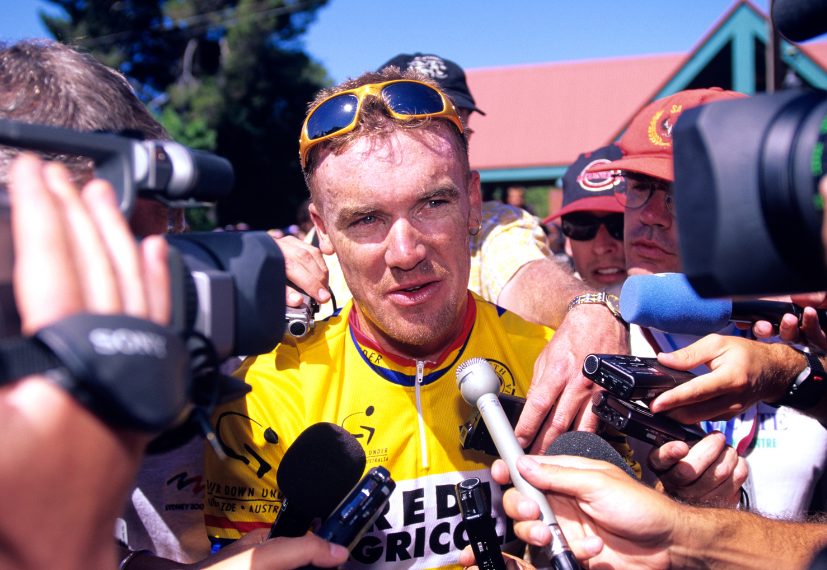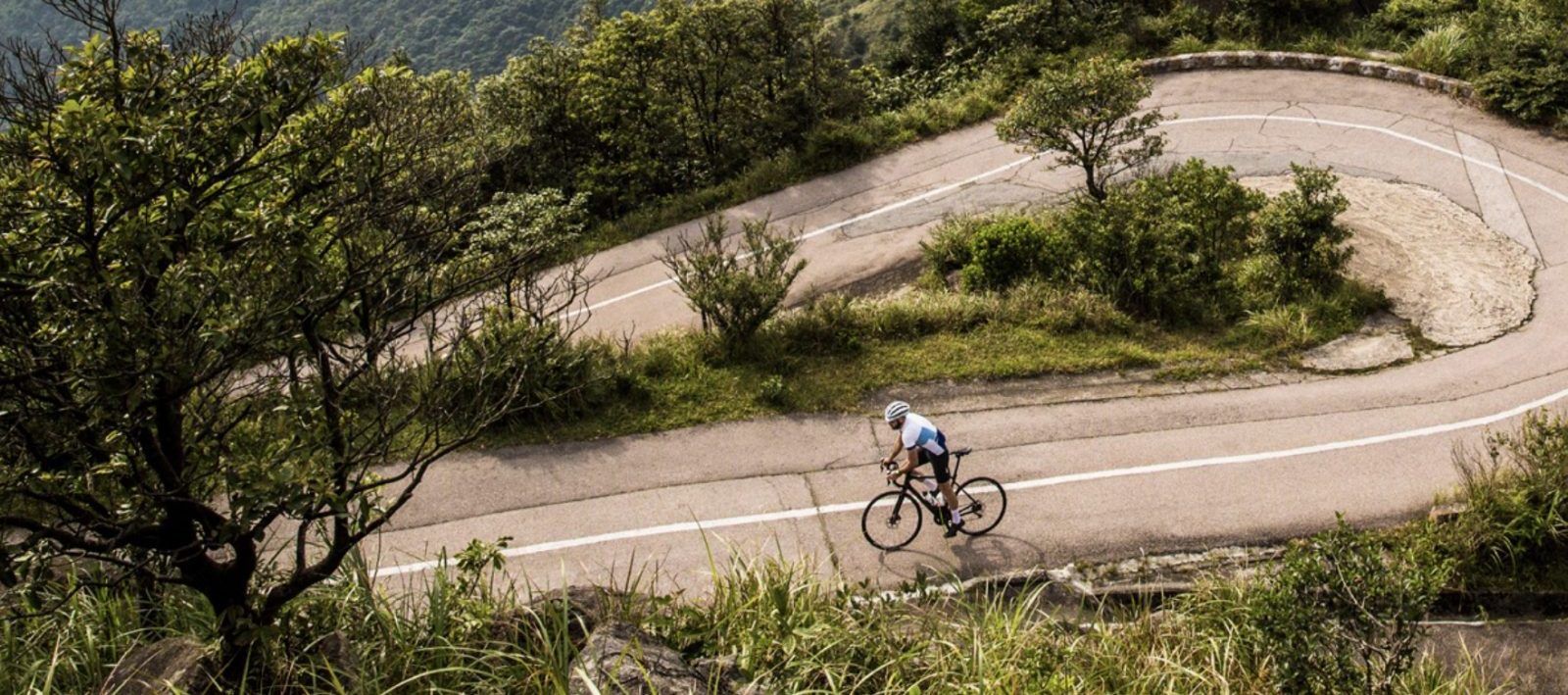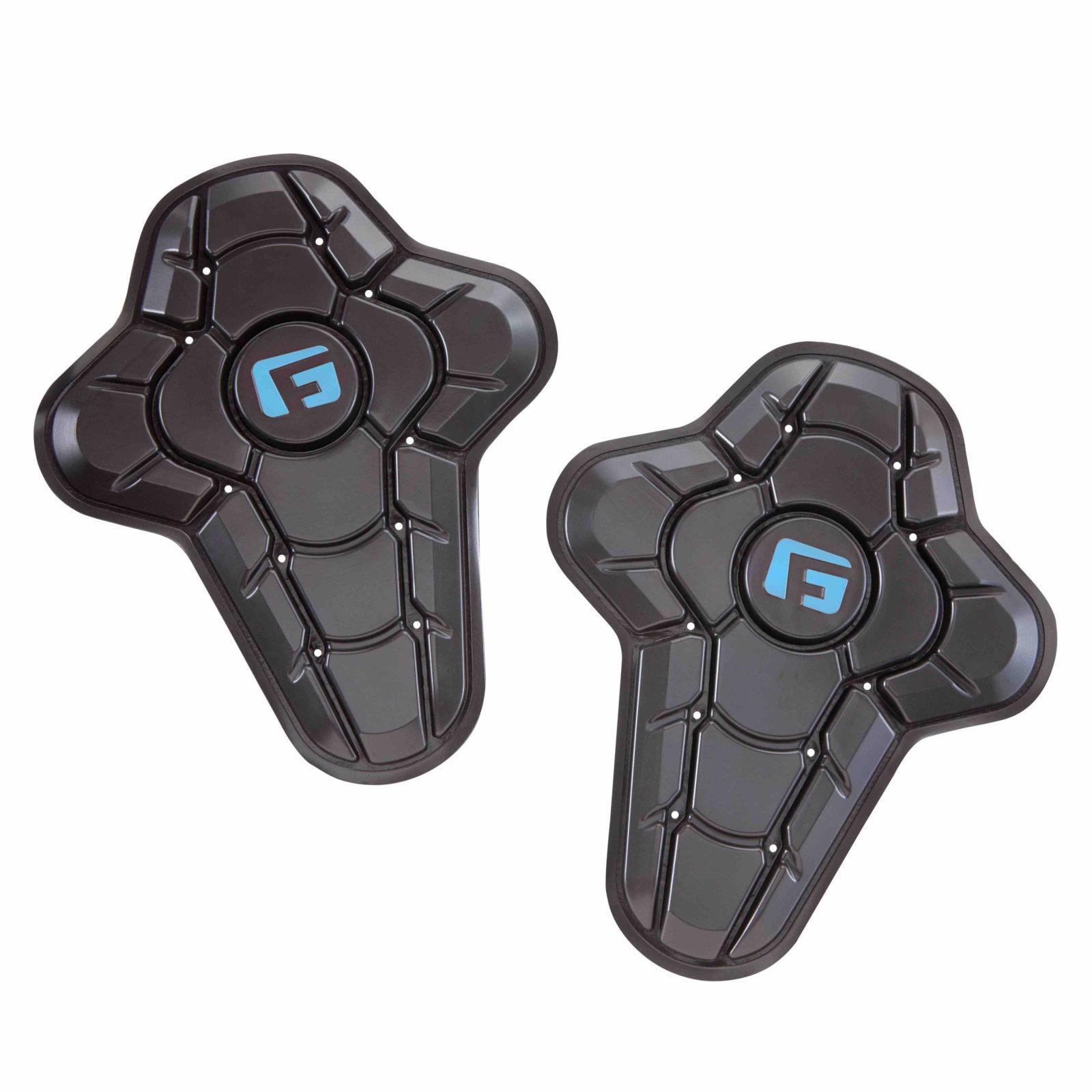
The Aussie legend and Santos Tour Down Under race director on the challenges of bringing the race together, how you can get the most out of Adelaide if you’re attending in 2026, and why he’s now happier strolling with his family than chasing wheels.
By Jack Lynch
Cyclist: We could point out plenty of highlights in the men’s and women’s Santos Tour Down Under for 2026, but as Race Director, that’s your job! What can we look forward to in both races next year?
Stuart O’Grady: From a holistic perspective, next year is set to be the first time in our history we’ve had all UCI WWT and WTeams on the start line across both men’s and women’s races. It has been mandatory for all men’s UCI WorldTour teams to participate since the Santos Tour Down Under was elevated to WorldTour status in 2008. But the women’s race has been by acceptance of invitation to each race, and participation has not been mandatory – until now.
Now that the UCI has changed the rules, it ensures the very best men’s and women’s teams will be on the start linei n Adelaide, which is huge for the overall quality of the event. We can now make the race longer and harder, creating a more balanced and exciting race for the riders, and of course our fans. Our 2026 women’s stages are the longest we’ve ever had, and with two ascents of the Corkscrew climb, the race will definitely go to another level.
Cyc: Is seeing our Australian heroes have success in the race something that plays on your mind?
SOG: We all love an Aussie to support and even better when they win! We do invite the very best Australians to our race each year and know they love the atmosphere of racing in front of a home crowd. Jay Vine won the Tour in 2023, Sam Welsford won a bunch of stages this year, and Grace Brown and Sarah Gigante have won two of the past three overall women’s titles, so we’re in good shape.
Like everyone, I would love to see more Aussies on the start line inspiring the next generation, but it’s also got to fit with their overall goals and program for the year.
Cyc: What’s the most challenging part about running a bike race?
SOG: As funny as it sounds, the bike race is the easy part! The challenges the Santos Tour Down Under team faces are each and every week leading up to the event and then daily once teams start arriving in Adelaide. Welcoming 33 men’s and women’s teams, involving over 550 people, to South Australia each January is brilliant for our state, but of course comes with a variety of challenges including travel logistics, visas, excess baggage, vehicle requirements, rider safety and keeping the public safe. It always keeps you busy and finding solutions with my team is one of the highlights of the role. We work very closely with the South Australian Police, local councils and the Department of Infrastructure and Transport to deliver a safe and successful event.
Cyc: It’s well-known that riders and teams love coming to Adelaide for the great event, atmosphere and single-venue nature of the TDU. Are you ever tempted to shake that up and explore more of South Australia? It’s a big state!
SOG: There are so many places in our great state I would love to take the Santos Tour Down Under, such as Kangaroo Island, the Flinders Ranges, the Riverland, Copper Coast or Mount Gambier. Each year we try to design a race that takes in as many iconic South Australian locations as possible, but what people probably don’t realise is we are working within UCI regulations that restrict how far we can travel to and from a stage each day. We cannot transfer more than two hours per stage per day, meaning if we transfer in vehicles two hours to a start location, the stage must finish close to the organisation’s allocated accommodation. Because we use the Hilton Adelaide as our race hub, we need to return here after each stage, so it’s a bit different to how it works in Europe. But we know it’s very popular among the riders and teams.
Cyc: You’ve been retired as a pro rider for 12 years now. What are some of the biggest changes you’ve observed in the peloton in that time?
SOG: So much has changed since I hung up the bike in 2013. Nutrition is probably top of mind, closely followed by the bikes and technological advancements with the science-backed racing and training. Gear ratios have also played a massive role in the increase in average speeds.
I believe back in my day we were probably all a bit over-trained. We didn’t consume the right fuel during racing and our max gear ratio was 54×11.So you can’t compare generations, all you can do is admire because each generation is only as fast as the information and technology available in the period you’re racing in.
Read the full interview with Stuart O’Grady in issue 77 of Cyclist Australia/New Zealand….



